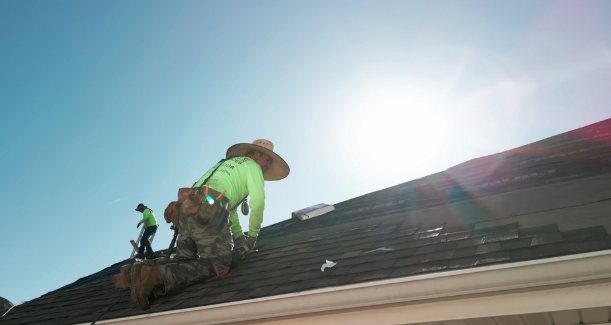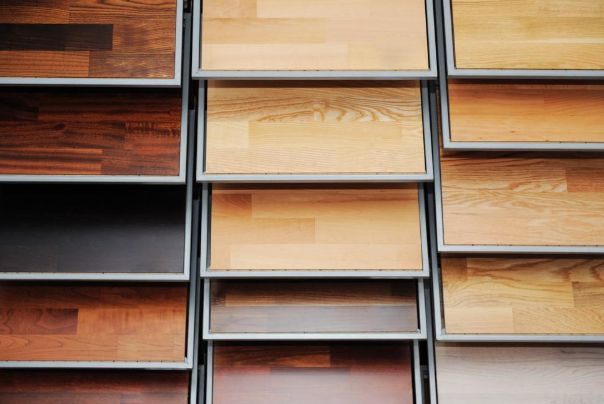Introduction
A roof is more than just a shelter above our heads. It offers protection, defines the house’s look, and makes it feel complete. Spending adequate time understanding various roofing types is imperative before choosing one. This way, you are saving yourself from considerable disasters in the future. But with so many roofing materials in the market, how does one make the right choice? We are here to make it simple for you.
5 Major Types of Roofing in the Market
Asphalt Shingles
Asphalt Shingles are among the most popular roofing materials in many homes today. It is made from a mix of asphalt, fiberglass, and mineral granules. Asphalt roofing is durable, versatile, and adapts to different weather conditions.
Homeowners can enjoy the bliss of choosing from a wide range of styles and colors. Asphalt Shingles are usually preferred by people looking for cost-effective roofing choices. It is affordable and easy to install. It has a good lifespan and lives for decades with regular maintenance.
Metal roofing
Metal roofing is a durable and resilient option, often made from materials like aluminum, steel, copper, or zinc. It is durable and withstands extreme weather conditions. Metal has a long lifespan, lasting up to 40 to 70 years. Moreover, metal roofs are energy-efficient, helping to keep homes cooler by reflecting sunlight and reducing cooling costs.
Their fire-resistant quality provides an added safety benefit, and they’re also environmentally friendly, often made from recycled materials. Metal roofs’ durability and low maintenance requirements make them a sound investment.
Wood shingles and shakes
Wood, a common roofing material, is known for its natural and rustic appearance. Shingles and shakes are made from wood, but they differ in how they’re produced. Wood shingles are typically cut from blocks of wood, giving them a smooth finish, while shakes are split from logs, resulting in a rougher, more textured surface. Wood provides good insulation properties, keeping homes cooler in the summer and warmer in the winter. This could be ideal for places like Appleton, which are usually colder. However, Appleton roofing options are much wider than you can imagine.
On the downside, wood shingles and shakes require regular maintenance to prevent rot, decay, and insect damage. They can also be more flammable than other roofing materials, although treatments are available to enhance their fire resistance.
Tile Roofing
Tile roofing is a classic choice often seen in Southwestern-style homes. It is made primarily from clay or concrete. Tile roofs are known for their distinctive, curved appearance. They are incredibly durable, with some clay tile roofs lasting for centuries, and they offer natural insulation.
However, tile roofs can be more expensive initially than other roofing materials. Not all homes are built to support the heaviness of tile, and structural considerations may be necessary.
Flat Roofs
Flat roofs have a very slight pitch compared to traditional sloped roofs, offering a streamlined and contemporary look. They are commonly found in modern and industrial-style buildings. One key benefit of flat roofs is the additional usable space they provide. This space can be turned into a rooftop garden, patio, or even used for solar panels. Furthermore, the construction process is simple and less expensive.
However, the main concern here is water drainage. Unlike sloped roofs, which naturally direct rainwater off the roof, flat roofs can accumulate water if not properly designed, leading to potential leaks and water damage. Maintenance becomes crucial to ensure that drains remain unclogged and the roofing material remains intact.
Factors To Consider When Choosing a Roof
Climate and Weather Patterns in Your Area
Regions with heavy rainfall or snow require roofs that shed water and snow efficiently, while areas prone to high temperatures benefit from reflective roofing materials that reduce heat absorption.
Architectural Style of the House
The roofing material should complement the home’s design. For instance, slate might suit a historic home, while modern homes look best with metal or flat roofing.
Costs
Initial installation costs can vary widely between materials. However, considering long-term maintenance can give a clearer picture of overall expenses.
Energy Efficiency
Opting for materials that offer better insulation can reduce energy bills. For instance, “cool” roofs can reflect more sunlight and absorb less heat.
Building Regulations
Different regions may have specific regulations regarding roofing materials due to fire safety concerns or environmental reasons. It’s essential to ensure your choice complies with local codes.
Conclusion
Your home’s roof is a significant investment. Choosing a material that aligns with your needs, aesthetic preferences, and the area’s climate is vital. Therefore, do a comprehensive study or seek expert advice, if required, to make the best decision.









